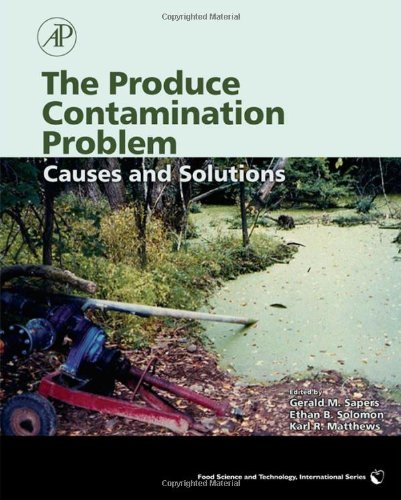

Most ebook files are in PDF format, so you can easily read them using various software such as Foxit Reader or directly on the Google Chrome browser.
Some ebook files are released by publishers in other formats such as .awz, .mobi, .epub, .fb2, etc. You may need to install specific software to read these formats on mobile/PC, such as Calibre.
Please read the tutorial at this link: https://ebookbell.com/faq
We offer FREE conversion to the popular formats you request; however, this may take some time. Therefore, right after payment, please email us, and we will try to provide the service as quickly as possible.
For some exceptional file formats or broken links (if any), please refrain from opening any disputes. Instead, email us first, and we will try to assist within a maximum of 6 hours.
EbookBell Team

4.1
20 reviewsThis book is organized into five sections beginning with an introduction in which the problem is described in terms of the number and size of produce related outbreaks, the commodities involved, and the human pathogens involved. The introduction also documents the failure of conventional sanitizing treatments to assure microbiological safety examining the problems of microbial attachment.
The second section reviews methods of identifying a contamination source (epidemiology, trace back, strain identification, location of Source) and then focuses on the various sources of microbial contamination (water, manure, airborne dust, wildlife, human activity) and where in the crop production sequence they might result in contamination.
In the third section, some of the commodities associated with major outbreaks (leafy vegetables, tomatoes, cantaloupes, apples, berries, sprouts) are examined to determine what characteristics make them especially vulnerable to contamination.
The fourth section then addresses means of avoiding produce contamination through use of Good Agricultural Practices and recommendations in FDA and industry guidance documents. Regulatory actions (recalls, restrictions on imports) to safeguard the public from potentially hazardous products are described. Coverage includes policy and practices in the US, Mexico and Central America, Europe and Japan.
The fifth section examines current technologies for reducing human pathogens in fresh produce including disinfection, rapid methods for detecting contaminants, irradiation, gas-phase application and best practices acceptable to organic growers, packers and processors.
*Addresses foodborne contaminations from a prevention view, providing pro-active solutions to the problems *Covers core sources of contamination and methodologies for identifying those sources *Includes best practice and regulatory information